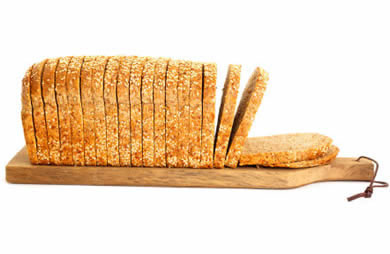|
One of the primary meat sources of many Plains Indians was the buffalo also known as the Plains bison. Native Americans did not just eat the meat as a rich protein source. They also used every part of the animal to meet their day-to-day needs such as the fat to make candles and soap or the bones to make shovels and other farming equipment. Unfortunately, the Plains bison nearly faced extinction in the late 1890's when European settlers were killing many for their hides to be shipped to the eastern U.S. and Europe for leather processing. Today, bison are making a comeback and there are almost 400,000 throughout North America. Yellowstone Park is home to the largest free-roaming bison population with about 3,500 for visitors to observe and enjoy. In addition to public federally protected free-range bison, private ranchers raise bison and their farm-raised meat is showing up in supermarkets around the country. Is it something we should be including in our diets? Several years ago, I was in Atlanta attending a conference. When it was time to head out for dinner, many of us wanted to find a local favorite instead of a nationwide chain restaurant. Someone recommended Ted's Montana Grill for a bison burger. We were all intrigued and set out for a great meal. My bison burger was lean and delicious and one of the best tasting burgers I have ever had. I was surprised to find that the restaurant first started in my home state of Ohio and today is now in over 19 states in the U.S. (I think I will have to include them in our Diet Friendly Dining review in the future!). Recently I have noticed ground bison meat in the organic section of the meat department in my neighborhood Kroger grocery store next to the Laura's Lean Beef I typically purchase. I wondered how my teenagers would feel about trying something new and waited a couple weeks before picking up a pound for the family to try. Last week I brought home a pound of ground bison to see what my family would think. I made a family favorite and didn't let anyone know there was anything different about the recipe until everyone was finished eating. I asked my family if they noticed anything different about the dish and some words used to describe a slight difference were – "sweeter", "smoother", and "more flavor." My family was rather insightful because bison meat is typically described as tasting similar to beef but sweeter and richer in flavor. So how does bison meat measure up to other animal protein sources? Bison is typically lower in cholesterol, fat, and calories than beef, pork, or skinless chicken. At the same time, it provides slightly more iron and B-12. Much of this is because they are typically grass-fed but compared to other animals that are more typically raised. When compared to grass-fed beef, they are similar in nutrients but with distinctively different textures and flavors. When purchasing bison, you will want to look for the "Certified American Buffalo" marketing label which certifies the meat to be USDA source verified according to the The National Bison Association. This certifies that the meat is not only source verified (ie: comes from bison/buffalo) but also, that it is raised without growth hormones, antibiotics, or animal byproducts. I found that the price of the organic bison was in line with the organic beef I typically purchase but that can vary by region and supermarket. If you get tired of having chicken all the time and are interested in trying a new variation on red meat, bison might be worth giving a try. Have you ever tried bison meat and if you did, how would you describe it? Have you seen it in your super market? Is it something you will try? |
More From SparkPeople
|


.jpg)
.jpg)

.png)









.jpg)